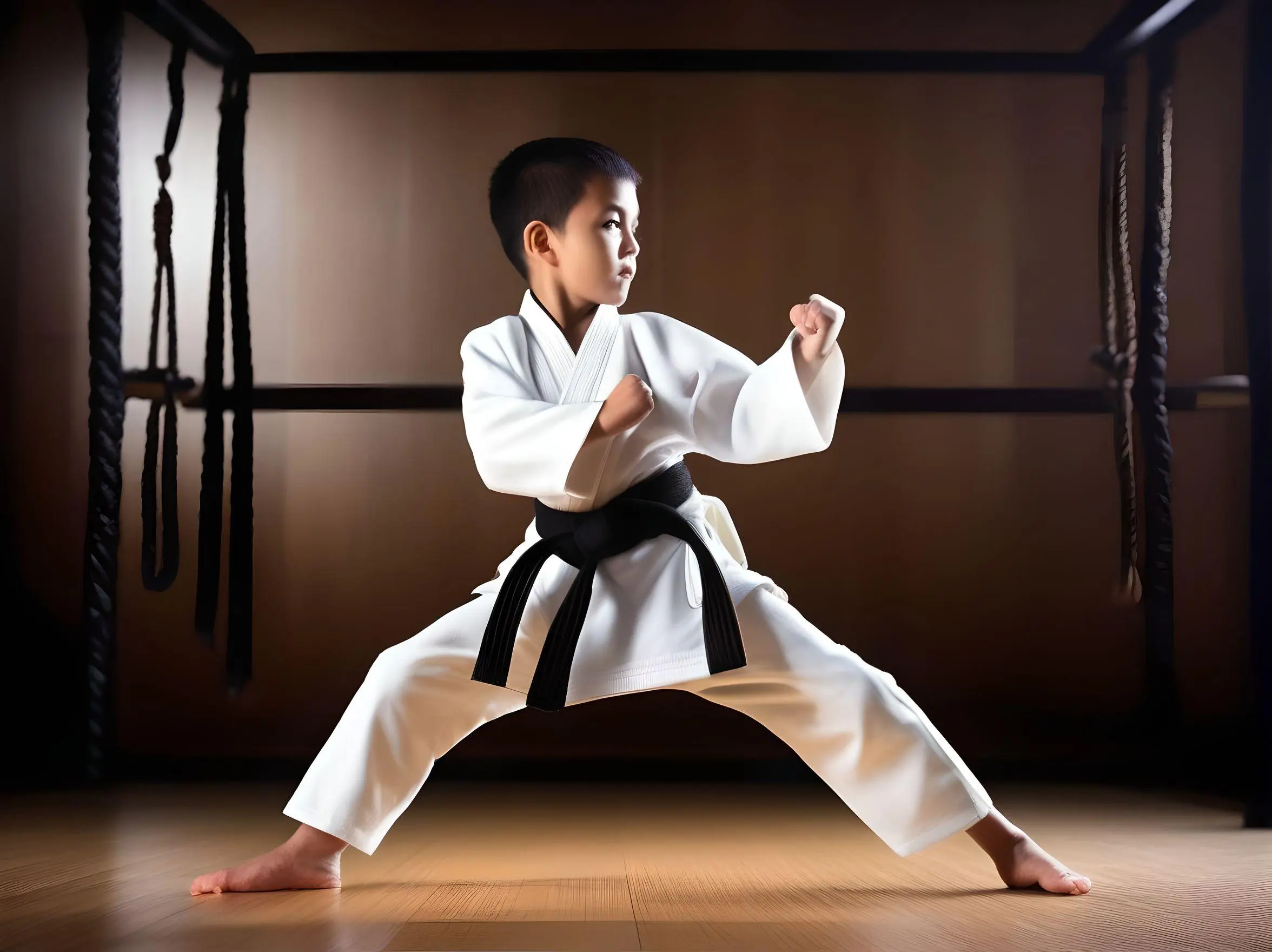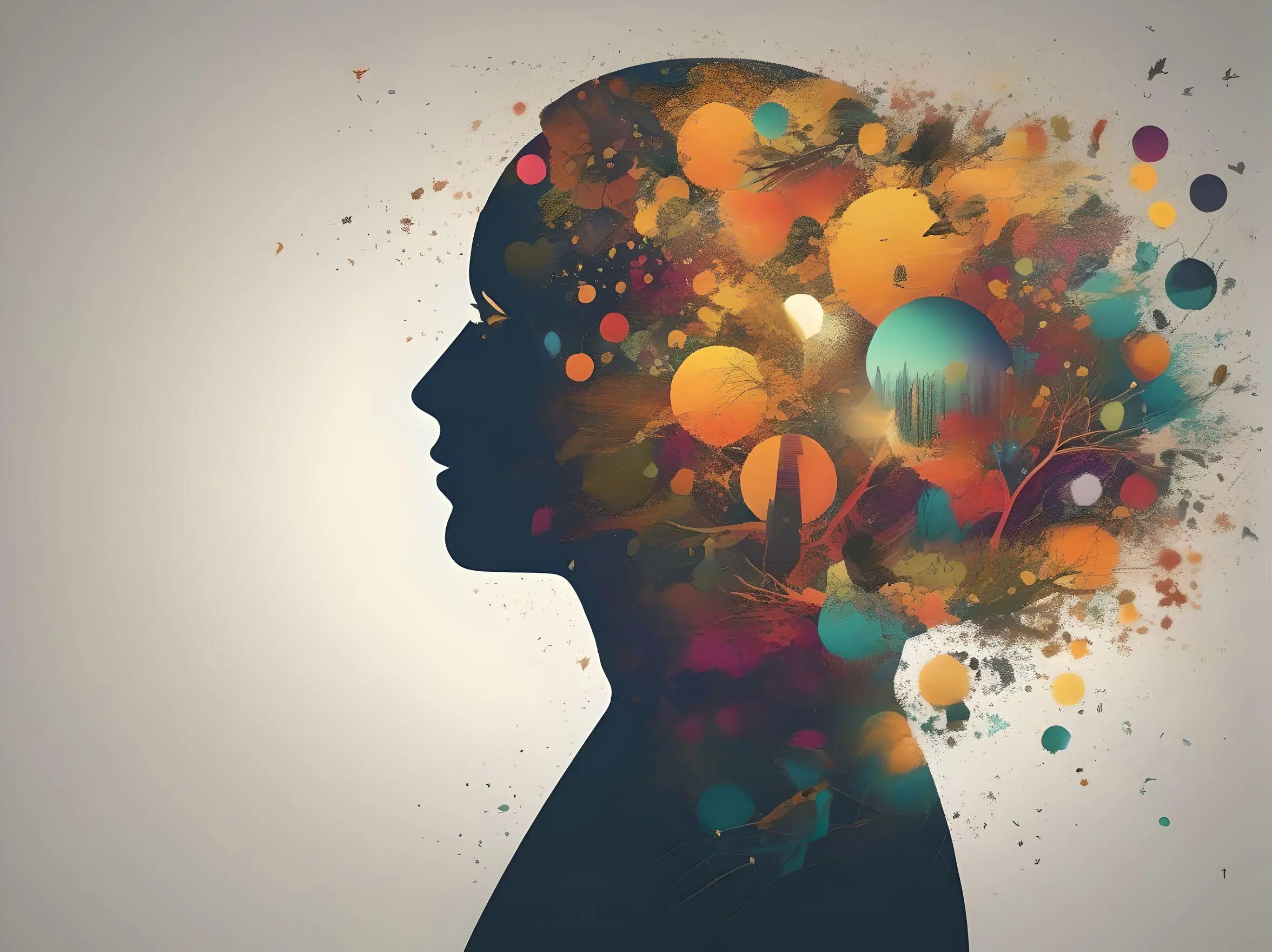In the ever-evolving world of mental health, we’re starting to truly understand that talking about trauma without feeling stable and safe is not the best first step. Think about it—sometimes, finding the right words to describe what you’re going through feels impossible, if not overwhelming, right? Especially for kids, or anyone who struggles to put their thoughts and feelings into words, there’s another powerful starting point that’s been with us all along: our own bodies. We’re not just talking about distracting yourself with exercise but using movement as a way to truly express and work through what you’re physically feeling. Whether it’s yoga, martial arts, or even kickboxing, moving your body can be a universal way to tap into your strength and resilience, helping you take back control and find safety within your body. So, let’s dive deep into how getting active can be a game-changer in jumpstarting your healing journey.
The Body’s Memory of Traumatic Events
Our bodies are incredible archives, storing not just the joys and achievements of our lives but also the shadows of our traumas. It’s a fact that might not get enough spotlight but is vital in understanding how we heal from trauma. Our physical selves hold onto trauma in ways we’re only beginning to fully understand, embedding these experiences deep within our muscle memory and nervous systems.
Science tells us that when we experience trauma, our bodies react in a fight, flight, or freeze response, a survival mechanism that’s hardwired into our biology. But what happens when the immediate threat passes, yet the body still holds onto that response? This is where the concept of ‘trauma being stored in the body’ comes into play. Our muscles, our posture, even the way we breathe can carry the weight of these memories, often leading to chronic tension, anxiety, and various somatic symptoms. The traumatic experience may have passed, but many people feel that they are sentenced to a psychological prison.

Researchers like Bessel van der Kolk, M.D., in his groundbreaking work, “The Body Keeps the Score,” highlight how trauma reshapes the body’s response to the world. Traumatic experiences can alter the way our brain processes danger and safety, often leaving individuals in a perpetual state of hyperarousal or numbness. This physiological imprint of trauma can make verbalizing these experiences challenging, as the body continues to react to past threats in present moments.
But there’s hope in this understanding. Recognizing that the body remembers is the first step in utilizing physical movement and mindfulness practices to begin the healing process. Techniques such as yoga, tai chi, and other forms of movement therapy are not just physical activities – they are ways to reconnect with our bodies, to listen and respond to its stored memories in a healing, powerful and compassionate manner. Through these practices, we can start to release the tension, address the somatic symptoms, and slowly rewrite the body’s memory of trauma into one of resilience and strength.
The Challenge of Narrative Therapy
While I’m a staunch advocate for breaking the silence and finding the courage to share our stories, I also recognize the immense difficulty that comes with it. Trauma can sometimes lead to an “out-of-body” experience, where we disconnect from our physical selves to escape the discomfort and pain. In most cases, anchoring ourselves back into our bodies becomes paramount. By reconnecting with our physical sensations and experiences, we create a safe space within ourselves to begin healing. It’s about honoring the body’s wisdom and resilience, acknowledging that sometimes, the first step towards healing is finding our way back home to ourselves.
Diving into the depths of our trauma through conversation can sometimes feel like wandering through a maze blindfolded, and this is especially for many kids. Finding the right words to paint the picture of their traumatic experiences can be daunting, and sometimes, the very act of talking about these memories can reopen old wounds rather than heal them. This is where the magic of working through the body steps in, offering a different kind of pathway to healing.
This alternative route bypasses the need for the exact words, which can be a relief for many, especially those who find verbal expression challenging to start with. Engaging in physical activities or exercises allows for a form of expression that words might not fully capture. Movement becomes a language of its own, a way to tell your story without the fear of getting lost in translation or the worry of retraumatization – it’s also a way for you to tell yourself that “it’s safe.”
Through physical activity, be it dance, yoga, or martial arts, individuals can process their emotions and experiences in a way that feels safe and controlled. It’s not about avoiding the trauma but facing it in a different, perhaps more manageable, way. This approach can be particularly empowering for kids, who might not yet have the vocabulary to articulate their feelings but can express themselves powerfully through movement. It’s a gentle reminder that healing comes in many forms, and sometimes, the best way to navigate through the labyrinth of trauma is to move through it, step by step, breath by breath.
Movement as Expression, Not Avoidance
Instead of using exericse as a form of avoidance, let’s talk about how you can channel, and even neutralize, your intense emotions through movement. This isn’t about running from what you feel – it’s about moving with those feelings, through them, and beyond.
Think about yoga, dance, martial arts, or kickboxing. These are not just workouts – they are expressions. They are your body’s way of speaking out what’s been kept silent inside. Every stretch, kick, or pose is a step toward releasing yourself from a mental prison and letting out those deep-seated emotions, giving them space to breathe.
Why does this matter?
Because your body remembers. It holds onto emotions, and through movement, you can begin to not only unshackle from the psychological trauma and release the hold it has on you, but also ground yourself into back into your own body. This process isn’t just healing; it’s empowering. It’s a way for you to take control, to say, “I’m not avoiding my feelings; I’m facing them head-on.”
Next time you engage in any physical activity, see it as an opportunity to connect with yourself on a deeper level. Let your movement be your therapy, your expression, and the gateway towards healing. Remember, it’s not about escaping but embracing and transforming your emotional energy into something powerful.
The Universal Power of Exercise
Have you ever noticed how good you feel after a workout? I’m not just talking about that physical tired-but-energized feeling, but something deeper, something more – it’s psychologically uplifting. It turns out, the perks of exercise stretch far beyond just getting physically fit or strong. Science backs this up, showing us that exercise is a powerhouse for boosting our mental and emotional well-being.
During a workout, our bodies unleash a flurry of endorphins, the natural mood lifters that play a pivotal role in our experiences of happiness and pain relief. This hormonal boost is just the tip of the iceberg. Exercise also ramps up the production of serotonin and dopamine, neurotransmitters that are key players in our mood and emotional regulation. Regular physical activity can help elevate our mood and ward off depressive symptoms.
But there’s even more going on beneath the surface. Engaging in regular exercise has been shown to enhance brain function and increase brain volume, particularly in areas related to memory and emotional regulation. This improvement in brain health is a testament to the power of physical activity to not only affect our bodies but also to shape our minds and emotional resilience.
Integrating exercises into your routine isn’t just about getting stronger physically. It’s about creating a foundation for overall health that includes mental and emotional strength. The focus, the breathing, the movements — they all work together to ground you in the present moment and enhance your body awareness.
A Survivor’s Story
In my practice, I’ve witnessed the profound impact physical activity can have on trauma recovery. Take, for example, the journey of a courageous patient of mine—a survivor of sexual assault. For her, kickboxing became much more than a form of exercise; it was her pathway to reclaiming her body and mind. With every punch and kick, she wasn’t merely learning how to defend herself – she was actively taking back control over her body, piece by piece. The more consistent she became with her training, the more side effects she experienced from her mastery–she was feeling stronger, empowered, and safer within her own skin once again.
This incredible transformation was not about the physical strength she gained but the emotional and psychological fortitude that came with it. She described kickboxing as a lifeline, a sentiment I’ve heard echoed by many others who’ve turned to physical movement as a means of coping and healing. This narrative is a testament to the body’s ability to move us out of trauma’s grip, which often leaves us immobilized, stuck in a cycle of freeze and panic responses.
Trauma, especially in its most harrowing forms, can paralyze us, not just metaphorically but physically—locking our ability to respond, to fight, or to flee. It’s here, in this predicament of fear and immobility, that the story of my patient shines a light on a critical path forward. Through kickboxing, she—and many others—have discovered a way to break the chains of paralysis. It’s a physical manifestation of fighting back, not just against an external adversary but against the internal aftermath of trauma that compels us to freeze.
This journey from immobility to empowerment illustrates the incredible capacity of movement to heal us. It’s a vivid demonstration that learning to fight, to move, can literally move us through and out of the shadows of trauma. Engaging in physical activity allows individuals to process and express emotions that are too complex for words, to literally fight their way out of the physiological freeze response trauma embeds within us.
The power of such stories cannot be overstated. They’re not just narratives of personal triumph but blueprints for healing. They show us that within the realm of movement—be it kickboxing, running, yoga, or any form that resonates—lies the potential to reclaim what was lost to trauma.
To anyone navigating the aftermath of trauma, let this story be a reminder: there is power in movement. It can break the hold of the freeze response, offering a pathway from paralysis to action, from fear to resilience. Your journey of healing can be forged with every step, punch, or posture you take, moving you closer to a deeper sense of appreciation for your body and a deeper sense of safety while reclaiming your agency.
Empowering Children
Engaging in regular physical activity teaches children valuable lessons in emotional regulation. For instance, when a child participates in sports or practices martial arts, they learn more than just techniques; they learn patience, focus, and the ability to stay calm under pressure. These are moments where the immediate urge to react impulsively can be tempered with thoughtful consideration, where the satisfaction of mastering a new skill comes from the dedication and persistence over time, not instant success.

This process is crucial for emotional development. It equips children with the skills to manage their emotions effectively, to recognize when they need to pause and take a breath before reacting. This self-control is invaluable in all areas of life. It teaches them that gratification doesn’t always come instantly, that the rewards of hard work, perseverance, and dedication are often delayed but ultimately more fulfilling.
Science also tells us that our body language can significantly influence our mood and emotions. For a child who feels disempowered, especially those who are victims of trauma such as bullying, the act of strengthening their body can be transformative. This is not just about the physical posture of strength but about the internal message it sends. It’s a way of telling themselves, “I am capable, I am strong, and I can take control of my situation.” This psychological boost is crucial for building self-esteem and resilience in the face of adversity.
Moreover, engaging in physical activities creates a foundation for grounding. It teaches children that they have the power to effect change within themselves. This sense of self-efficacy can ripple out into other areas of their lives, providing them with the confidence to stand up for themselves and others, to navigate difficult situations, and to seek help when needed.
By emphasizing these aspects of emotional regulation, self-control, and delaying gratification, we’re not just helping children build a shield against adversity — we’re empowering them to navigate their emotions intelligently and empathetically. We’re teaching them that their reactions and emotions are within their control, and that there’s immense power in choosing how to respond to the challenges they face.
The Mindful Movement

At the heart of healing from trauma lies the profound yet often overlooked tool: the power rooted deeply in the mindfulness properties inherent to our physical selves. Unlike the mind, which can wander into the past or project into the future, the body exists firmly in the present moment. It serves as a constant, grounding bridge to the ‘here and now.’ This realization opens up a transformative pathway in trauma work, inviting us to engage with our bodies not as bystanders to our experiences but as active participants in our healing.
Connecting with our bodies teaches us to inhabit our physical selves in entirely new ways. It’s a process of building a renewed comfort and familiarity with the biological sensations that accompany our emotional triggers. For someone navigating the aftermath of trauma, the body can often feel like an alien landscape, marked by unfamiliar or even threatening sensations. Yet, through mindful engagement—be it through breathwork, yoga, or any form of physical activity that encourages presence—we start to map this landscape. We learn the language of our bodies, recognizing the signs of stress, anxiety, or fear as they arise, and more importantly, learning how to respond to them with compassion and understanding.
This approach to trauma work is transformative. It shifts the narrative from one of avoidance and disconnection to one of acceptance and engagement. By focusing on the body’s ability to anchor us in the present, we cultivate a sense of safety within ourselves. This is crucial in trauma recovery, where feelings of safety and control are often compromised. Mindful movement practices allow individuals to explore their physical sensations in a controlled, gentle manner, gradually building up a tolerance to those sensations that might have once been overwhelming.
Moreover, this connection to the body fosters a deeper, more nuanced understanding of our emotional triggers. It’s not just about identifying what these triggers are but about recognizing how they manifest physically and learning strategies to navigate and leverage them effectively. This knowledge empowers us to take proactive steps in our own healing process, using the body as a tool to mitigate the intensity of emotional responses.
Ultimately, the journey of reconnecting with our bodies in trauma work is a testament to the resilience and adaptability of the human spirit. It underscores the idea that healing is not just a mental or emotional process but a holistic one that encompasses every facet of our being. By embracing the mindfulness properties of our bodies, we unlock a powerful avenue for recovery, one that teaches us to live more fully in the present, to appreciate the depth of our experiences, and to find comfort and strength within our own skin.
Frequently Asked Questions
How do you know your body is healing from trauma?
Recovery isn’t about erasing all memories or emotions tied to trauma; it’s about reclaiming control of your life while living with those experiences. Much like grief, there is no definite timeline. It’s important to be kind, compassionate, and patient with yourself as you move through the healing process.
Will exercise or movement be enough for recovery?
Healing through the body is a crucial initial step in trauma recovery, fostering a sense of safety and grounding. Yet, addressing trauma often involves multiple avenues. Processing trauma entails expressing emotions and assigning meaning to experiences. Ultimately, it’s about creating a new sense of self and envisioning a future beyond the trauma, fostering meaningful relationships that redefine one’s narrative. Trauma, once all-encompassing, becomes integrated into one life’s story without defining it entirely.
What are the 3 stages of trauma recovery?
In general, trauma treatments have three phases: safety and stabilization, processing trauma and integration & connectivity. This is an initial definition by Pierre Janet, an expert psychologist in psychology.
What does exercise do for trauma?
Research has shown the benefits of exercising for improving mental stability, emotional regulation and mental clarity.
What exercises help with trauma?
Mind-body exercises such as yoga, Tai Chi and Qigong support the relationship between mind and body; these exercises can help to treat the symptoms of phobias, depression, and other psychological problems.
What is an example of a mind-body interaction?
The physical impact of your thoughts affects the way your body works. For example, your heart rate can increase when you feel anxious when speaking with someone new or if you’re doing an important task for the first time.
Get Help
You don’t have to navigate the healing journey alone; professional support is available to guide you every step of the way. At Optimind Counseling, our team offers trauma-informed care through workshops, group support, and personalized therapy to address your unique needs. Reach out to learn how we can support your path to healing.
About the Author
Albert Nguyen is a psychotherapist dedicated to enhancing mental health through Optimind Counseling. Specializing in anxiety, depression, and peak performance, Albert and his team offers an eclectic and integrative approach tailored for children, teens, and adults. Discover transformative mental health care and start your journey today. Connect with Albert and his team for a personalized path to mental wellness here.






